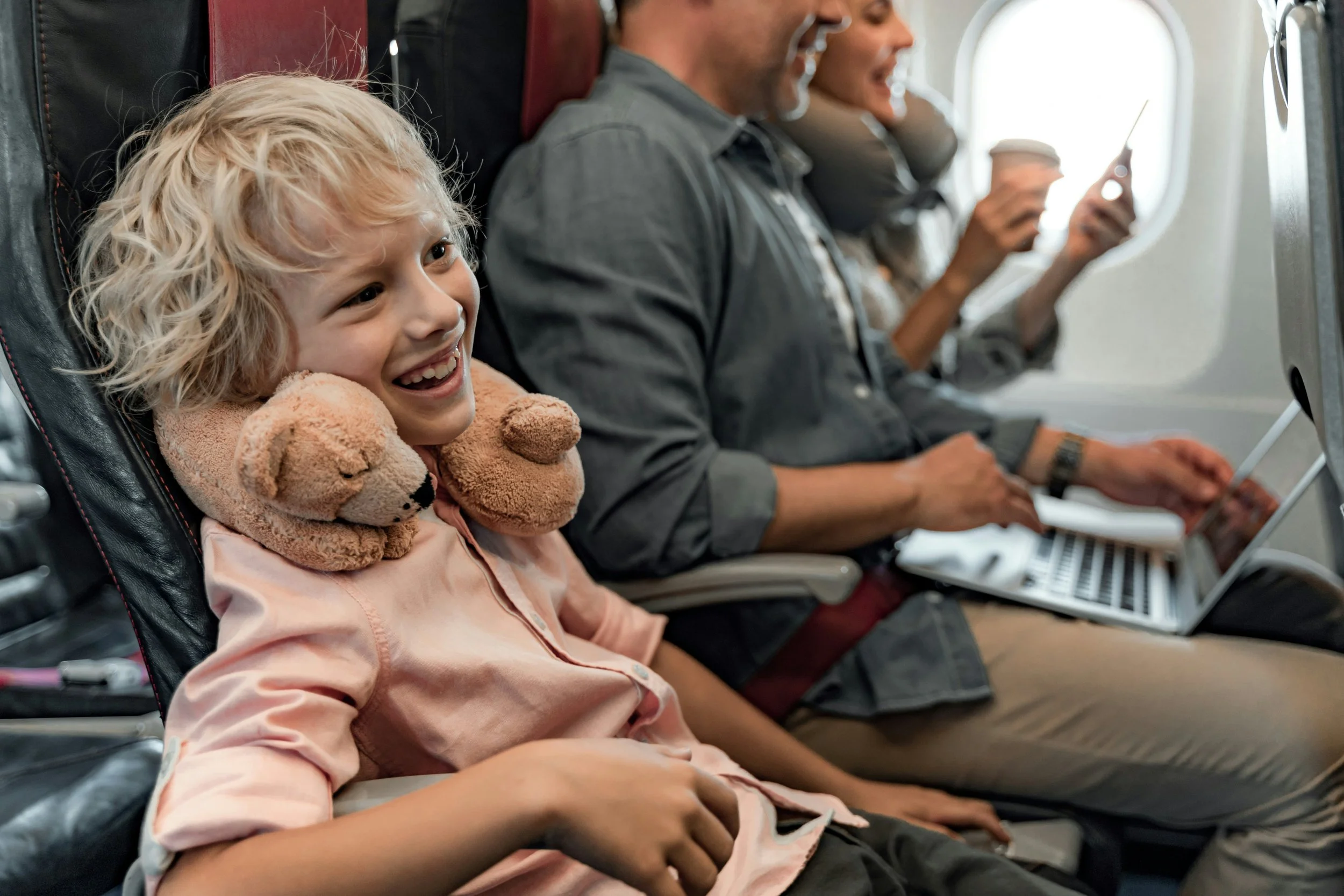From Boarding to Touchdown: The Small Seating Choice That Can Change Everything
Some journeys start long before the plane ever leaves the runway. And for parents flying with an autistic child, that journey includes a thousand details that other travellers might not even consider.
You’ve likely already mastered the art of the sensory travel kit—noise-cancelling headphones, the softest of soft comfort toys, a snack stash worthy of a Netflix binge. You’ve rehearsed security procedures, pre-downloaded cartoons, possibly even coordinated your departure time with your child’s preferred routine.
But there’s one game-changing element that’s often left until last—despite its power to make or break the in-flight experience: where you sit.
We’re not talking seat upgrades or extra legroom for the sake of luxury. This is about creating a pocket of calm in a high-stimulus environment—an island of predictability, privacy, and peace, 35,000 feet above the ground.
“Parents often put so much thought into what to bring and how to prepare, but the seat itself—where the child will spend hours—is sometimes chosen last-minute,” says Mark Blakey, CEO of Autism Parenting Magazine, the award-winning publication helping families navigate the highs and lows of the autism journey. “But the right seat can make an enormous difference in how a child feels, copes, and connects with the experience.”
So what are the best seats on a plane for an autistic child? And what small adjustments can help the journey feel less like a test of endurance—and more like an empowering step towards adventure? Let’s dig in.
🛫 The Best Seats in the Sky (When You’re Travelling with an Autistic Child)
1. The Front Bulkhead Window Seat: A Little Sanctuary in the Sky
Think of this as your ideal starting point. Bulkhead seats (those at the front of a cabin section, with no one in front) offer a bit more breathing room—which can make all the difference if your child struggles with feeling confined.
“They allow for extra movement and reduce the chances of accidental bumping or encroachment by other passengers,” says Blakey. And that window? It’s more than just a pretty view. It creates a defined space—a visual anchor that offers calm, distraction, and a gentle sensory break from the rest of the cabin.
Being near the front also tends to mean less engine noise and foot traffic. In other words: less chaos, more calm.
2. Rear Window Seats: The Next-Best Cocoon
If the bulkhead has already been snapped up (and they often are), a window seat toward the back can still work wonders.
“You’ll often find fewer disturbances back there,” says Blakey. “And for some children, the quiet of being slightly removed from the central activity of the cabin helps reduce social anxiety.”
While it may be a touch louder in terms of engine hum, there’s usually less movement around you—and fewer people brushing past mid-flight.
3. What to Gently Avoid
Some seats are better left unbooked:
Middle seats – Just… no. Being wedged between two strangers can feel overwhelming for anyone, let alone a child with sensory sensitivities.
Exit rows – These are off-limits to children under 15 anyway, and even if they weren’t, they often come with firm restrictions and very little flexibility.
Seats near galleys or toilets – Yes, they sound convenient. But they also come with noise, smells, and a constant parade of people.
✈️ Tips from the Experts: Making the Whole Journey Smoother
If seat selection is the foundation, what you build on it matters too. Blakey shares some thoughtful, real-world strategies for making air travel with an autistic child more manageable—sometimes even enjoyable.
1. Try a Dress Rehearsal (Yes, Really)
Some airports now offer sensory-friendly familiarisation programs—where children can practise going through security, walking onto a plane, even sitting in a mock cabin.
“It helps demystify the process,” says Blakey. “When a child knows what to expect, they feel more secure.”
2. Visual Schedules Are Your Secret Weapon
Break down the journey into bite-sized, visual steps using photos, drawings, or icons. From “pack bags” to “arrive at gate” to “watch a movie,” these storyboards turn a chaotic experience into something structured—and less overwhelming.
3. The Sensory Kit: Pack It Like a Pro
Don’t just bring what they need. Bring what they love. Noise-cancelling headphones, a favourite toy, a textured blanket, chewy jewellery—whatever helps your child feel grounded, pack it. This is not the time to travel light.
4. Be Strategic About Boarding
Yes, airlines often let families with additional needs board early—but that’s not always the best move.
“For some kids, sitting on a plane for longer than necessary can be stressful,” says Blakey. “Boarding last can sometimes reduce anxiety and help you settle more quickly.”
5. Let the Crew In On It
A quiet word with the flight attendants before takeoff can go a long way. Many airlines offer support programs or accommodations for autistic passengers, but even a simple heads-up helps crew be more mindful and supportive if things get tricky.
🧳 Final Thoughts from the Expert
“The seat is just one part—but it’s a powerful one,” says Blakey. “By combining a well-chosen seat with preparation that’s personalised to your child, you’re setting the stage for a calmer, more successful flight.”
And perhaps most importantly: “Try to see flying not as something to fear—but as a step forward. An opportunity for your child to stretch, explore, and build resilience, with your support right beside them. Travel, when made accessible, opens doors. It doesn’t have to be perfect—it just has to feel possible.”

















